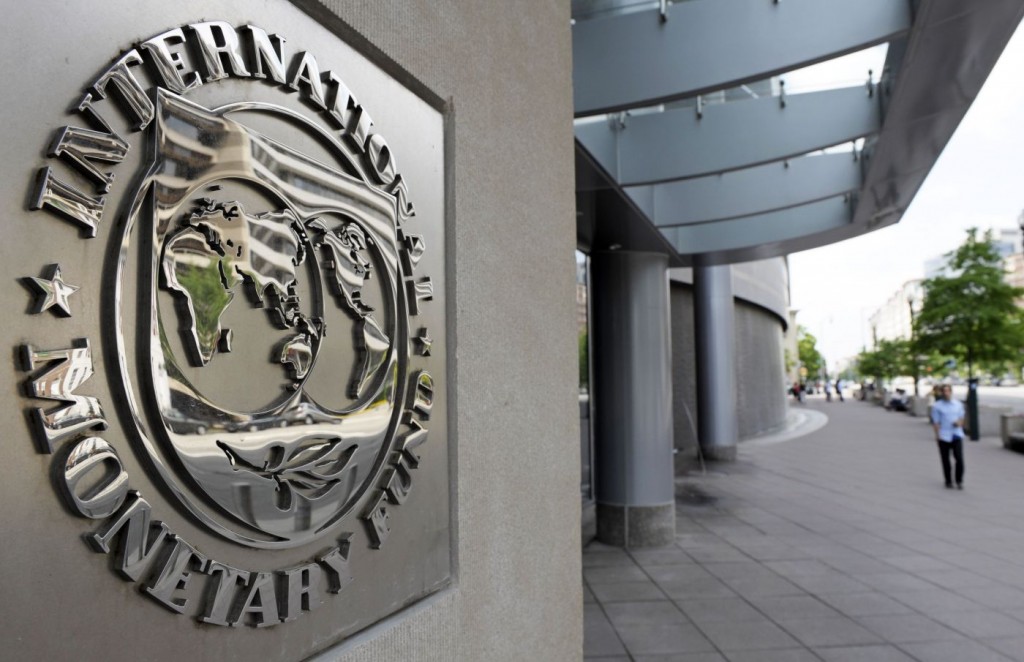The IMF, whose bailout operations are absorbed by the taxpayers in the member countries whenever a particular bailed-out nation defaults, announced on Friday, June 19th, that it will “continue to support Ukraine through its Lending-into-Arrears Policy even in the event that a negotiated agreement with creditors in line with the program cannot be reached in a timely manner.” Though this new “Lending-into-Arrears” policy violates two IMF rules, it was justified by the IMF’s Managing Director Christine Lagarde on the basis of the Ukrainian government’s “continued efforts to reach a collaborative agreement with all creditors.”
In other words: a statement by Ukraine’s government that it wants to reach an agreement with its private creditors is being used by the IMF as if it were an excuse to extend into the indefinite future the IMF’s continued taxpayer-guaranteed financing of (‘lending’ to) the Ukrainian government, despite the fact that the IMF is violating two of the IMF’s own most-basic rules restricting its lending-authority — these rules are lending-restrictions whose purpose was to reduce the riskiness of the IMF’s lending, and so to minimize the amount that the IMF will be taking from taxpayers to fund its losses:
- The IMF does not lend to nations at war — but Ukraine continues being at war against its former Donbass region despite the Minsk II ceasefire agreement; ceasefire violations, especially by the Ukrainian side, continue regularly.
- The IMF does not lend to nations that are likely to default — but every independent source categorizes Ukraine as being virtually certain to default, and the only actual question regarding Ukraine is: when? The IMF’s answer: we’ll keep lending, building Ukraine’s public debt even higher, until our aim is achieved, and then we won’t — and that’s when the default will occur — the default will happen when we decide it will happen. It will happen when we will stop lying and saying that it won’t happen.
The reasons for Ukraine’s actual insolvency are obvious. As John Helmer reported on 3 September 2014, ”of the $3.2 billion disbursed to the Ukrainian treasury by the IMF at the start of May [in order to finance the war], $3.1 billion had disappeared offshore by the middle of August. The role of the leading Ukrainian banks, and of the Kiev officials allied with them, in arranging this was reported here.” His “here” linked to his earlier report, “Stress Test for IMF in Ukraine — Igor Kolomoysky’s PrivateBank Is the Biggest Beneficiary of the IMF’s Emergency Liquidity Assistance,” which article of his had also noted that, “According to Gerry Rice …, the spokesman for the IMF’s managing director, Christine Lagarde …, there’s no telling how much of the IMF payments will be transferred to the Ukrainian banks.” In fact, “the NBU [National Bank of Ukraine, their central bank] said it refuses to disclose what liquidity assistance it has been paying to Privatbank because ‘information on banks or customers, collected during banking supervision, is a bank secret’.” That earlier report from Helmer, in turn, linked to Helmer’s prior “Dniepropetrovsk Governor Igor Kolomoysky to Get IMF Bailout for PrivateBank,” which had opened: “The International Monetary Fund (IMF) is preparing to release Privatbank, the largest commercial bank in Ukraine, from independent tests of its solvency and capital adequacy, and allow a bailout of the bank with Ukrainian public funds, backed by the IMF. The Ukraine mission of the IMF has also revealed this week that it is allowing Igor Kolomoisky …, the control shareholder of Privatbank, to direct his own audit and stress test of the bank. This is despite independent evidence of large related-party lending in which the bank has been engaged; and despite judgements recently issued in the UK courts that Kolomoisky presents evidence that is ‘false or materially incorrect’.”

